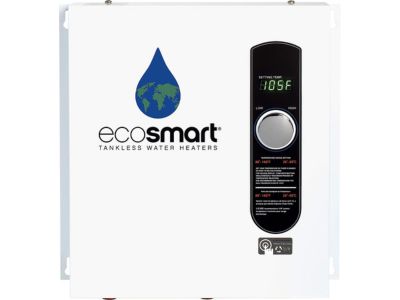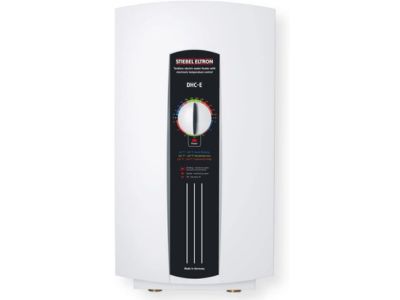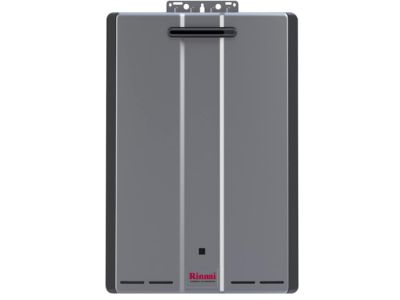- Running out of hot water on a cold winter’s day can cause a shiver so memorable that you never want to feel it again. Learning that you consume too much energy every month is even more disappointing, depending on the depth of your pockets. Luckily, you can bid these problems goodbye by investing in a tankless water heater of the appropriate size. With the right size, you won’t need to worry about how many GPM for a tankless water heater.
- Tankless water heaters are great for your home because they provide endless hot water. With a tankless water heater, you can rest assured of the instantaneous flow of hot water as long as the unit is on. They are also considered to be more energy-efficient than traditional water heaters.
It may not be enough that you have finally switched from a storage-tank water heater to a tankless water heater. You may also need to ensure that you have the right size; what is the use of a water heater if it can not supply hot water where needed and at the right temperature. Selecting the right size tankless water heater involves considering several factors, such as the desired flow rate, temperature rise, and the fixtures it will serve.
Calculating the GPM of Your Tankless Water Heater
Certainly, you are eager to learn how much GPM for a tankless water heater. A tankless water heater’s flow per minute rate is the most important size consideration. A tankless heater with 3.2 GPM can heat 3.2 gallons of water per minute to supply hot water to your faucets. Anticipate simultaneous utilization of all fixtures to determine the proper capacity. For example, When two people bathe, one using the sink needs a 5.75 GPM unit (two 2.5 GPM showers and a faucet).
The GPM Calculator
Note that it is not sufficient to observe the flow rate merely; know the heat your unit can supply to water. All you need do is subtract the temperature you get from the desired one. If your tankless water heater supplies 70 degrees of hot water and you want 120 degrees, find one with a 70-degree capacity.
You can estimate the desired size in terms of GPM by multiplying the water flow out of the unit by the temperature rise. For example, if you need a total flow rate of 5 GPM and a temperature rise of 60°F, you would require a tankless water heater with a minimum capacity of 5 GPM. You may call this formula the electric tankless water heater sizing calculator because it is incredibly helpful if you must learn how many GPM for a tankless water heater.
To be safe, anticipate peak demand scenarios where faucets, taps, and showers run simultaneously. This will help you add a safety margin to the estimated numbers. Standard practice usually adds about 20 to 30% percent to the already calculated GPM; this way, you have a rough idea of what GPM is needed for your tankless water heater.
Ultimately, the formula for calculating the GPM (gallons per minute) of a tankless water heater is as follows:
GPM = Flow Rate / (Temperature Rise × 8.34)
Where:
-
- Flow Rate is the total hot water flow rate required by all fixtures and appliances.
-
- Temperature Rise is the desired increase in temperature for the hot water.
-
- 8.34 is the constant representing the weight of one gallon of water.
If you still find this difficult to navigate, you may need to procure the services of a professional. A professional will know how to make necessary calculations and the suitable tankless water heater for your home.
Some of the best tankless water heaters on the market
We have decided to aid your hunt for a new and efficient tankless water heater. Check the options below for the best tankless water heater on the market. We developed this list by studying the major players in the water heater market and brought you a few of their products.
EcoSmart ECO 27 Tankless Water Heater

The EcoSmart ECO 27 Tankless Water Heater is well known for its energy efficiency. This tankless water heater uses a modulating technology that regulates energy consumption based on your hot water demand. Also, the ECO 27 can provide hot water for multiple fixtures simultaneously. It has a maximum flow rate of up to 6.5 gallons per minute (GPM) in warmer climates and can provide sufficient hot water for smaller to medium-sized homes. It has a compact build that allows it to fit perfectly into very tight spaces.
Stiebel Eltron 203671 DHC-E 8/10 Classic Series Tankless Electric Water Heater

The Stiebel Eltron DHC-E is not only compact, but it is lightweight, too, making it a perfect fit for tight spaces. As expected, a tankless water heater provides an instantaneous supply of hot water. The installation of the DHC Trend may be quite complicated, but not for a professional. The installation process requires electrical connections that a ‘layman’ may be unable to navigate. Hence, it’s important to follow the manufacturer’s guidelines and consult a licensed electrician to ensure proper installation.
Rinnai RU160eN Condensing Tankless Hot Water Heater

This tankless water heater is a condensing type because it has a secondary heating mechanism. Learn the difference between a condensing and a non-condensing tankless water heater to make an informed decision. However, in a nutshell, we understand that condensing tankless water heaters are more energy-efficient than their non-condensing counterpart. This Rinnai tankless water heater has a capacity of at least 9 gallons and is powered by gas. It has up to 7 GPM hot water flow rate for a powerful, constant stream.
Parting Words
In conclusion, determining the appropriate GPM for a tankless water heater is essential for meeting your hot water needs efficiently. By considering your unique hot water requirements, total water flow, and desired temperature rise, you can calculate the suitable GPM capacity.
Anticipating peak demand scenarios and adding a safety margin ensures optimal performance. Investing in a tankless water heater with the right GPM can provide endless hot water and significant energy savings, making it a wise and eco-friendly choice for your home.
FAQs
What size tankless water heater do I need for a family of 2?
A tankless water heater with a flow rate of 2 to 3 gallons per minute (GPM) should be enough for a family of two. However, desired hot water temperature, concurrent consumption, and unique high-demand appliances should also be considered.
How do tankless water heaters reduce energy bills?
Tankless water heaters save energy by removing the standby heat loss typical tank water heaters face. They simply heat water as needed, eliminating the continual energy usage of maintaining a big hot water tank. This on-demand heating approach saves energy waste and utility expenses, potentially saving money on energy bills.
What can I do to keep my tankless water heater serving efficiently?
Regularly maintain your tankless water heater by draining it to remove mineral buildup, clean vents, and check for leaks. Additionally, for best operation, follow the manufacturer’s directions, change temperature settings accordingly, and have a professional check performed on a regular basis.
What is the average lifespan of a tankless water heater?
A tankless water heater has an average lifespan of roughly 20 years. The actual longevity, however, might vary based on factors such as consumption habits, water quality, maintenance methods, and the precise type and brand of the water heater.
How many GPM for a tankless water heater?
The gallons per minute (GPM) required for a tankless water heater depending on your unique hot water requirements. You determine it based on the quantity and kind of fixtures or appliances consuming hot water simultaneously. Calculating the overall flow rate helps in determining your tankless water heater’s GPM capacity.
